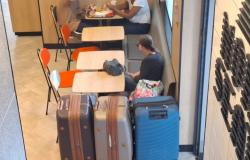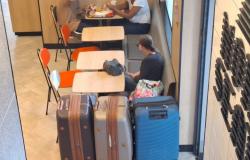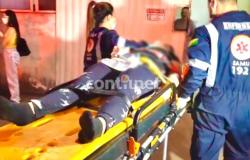The 2024 Map of Inequality among Brazilian Capitals, which was presented on Tuesday (26/03), in São Paulo, by the Sustainable Cities Institute, highlights the serious problems in Public Security in Manaus. The city appears among the last of the 26 Brazilian capitals mentioned in the ranking, in the main indicators of juvenile homicide, feminicide, homicide and traffic deaths.
Manaus is the 24th capital in terms of juvenile homicide (between 15 and 29 years of age) with a rate of 234.91 per 100 thousand; 25th in femicide rate, with 6.56 per 100 thousand women; the 24th in homicide rate, with a rate of 55.81 per 100 thousand inhabitants and the 16th in traffic deaths, with a rate of 11.17 per 100 thousand inhabitants.
Public Security, according to the Constitution, is “the duty of the State, the right and responsibility of all, it is exercised to preserve public order and the safety of people and property, under the aegis of the values of citizenship and human rights , through the bodies established by the Union and the States”.
According to Mapa, Salvador has the worst homicide rate for young people between 15 and 29 years of age among all Brazilian capitals, with 322.5 deaths per 100,000 inhabitants. At the other extreme is São Paulo, where around 7.76 young people in this age group die for every group of 100 thousand inhabitants.
The capitals of the North and Northeast occupy the last positions on the Map of Inequality among Brazilian Capitals. According to the study, prepared for the first time by the ICS (Sustainable Cities Institute), the two regions occupy the last 15 positions in the ranking among the 26 Brazilian state capitals — Brasília does not appear in the survey.
First on the list is Curitiba (PR), followed by Florianópolis (SC) and Belo Horizonte (MG). The ICS classification is the sum of points from the 40 social indicators analyzed. Curitiba led with 677 points, while Porto Velho (RO), with 373 points, was in last place.
The regional difference is especially high in measures of income, health, and public safety. In indicators such as population below the poverty line, infant mortality and homicides per 100 thousand inhabitants, the rates in capitals in the South, Southeast and Central-West are up to ten times higher than those in the North and Northeast.
An example of regional disparity is the homicide rate. While São Paulo (SP), the best placed in this regard, had an average of 2.03 murders for every 100 thousand inhabitants in 2021, the rate in Macapá (AP), last on the list, was 29 times higher: 62.41 deaths per 100 thousand inhabitants.
The study indicators are based on the UN Sustainable Development Goals. This list, which Brazil committed to combating by 2030, includes goals such as eradicating poverty and hunger, reducing inequalities and seeking peace, justice and effective institutions.
Cities in the Northeast and Northeast are marked by poverty, unemployment and violence. The capitals of the two regions occupy the bottom five positions in the country in indicators such as GDP per capita, receipt of social benefits, unemployment rate and homicide rates, especially among the young population.
South, Southeast and Central-West, on the other hand, lead the majority of the questions. An example is the population below the poverty line: the lowest rates are Florianópolis (SC), with 1.1%; Curitiba, with 2.3%, and Cuiabá, with 2.7%. At the other end are Recife (PE), Rio Branco (AC) and Salvador (BA), which have more than 10% of the population in this condition.
Tags: Violence indicators place Manaus among worst capitals Inequality Map
--





